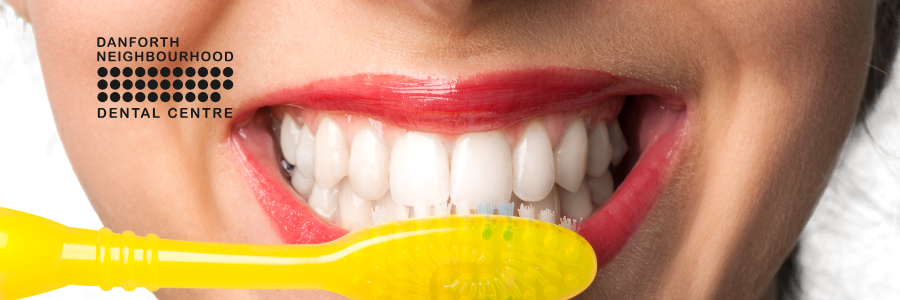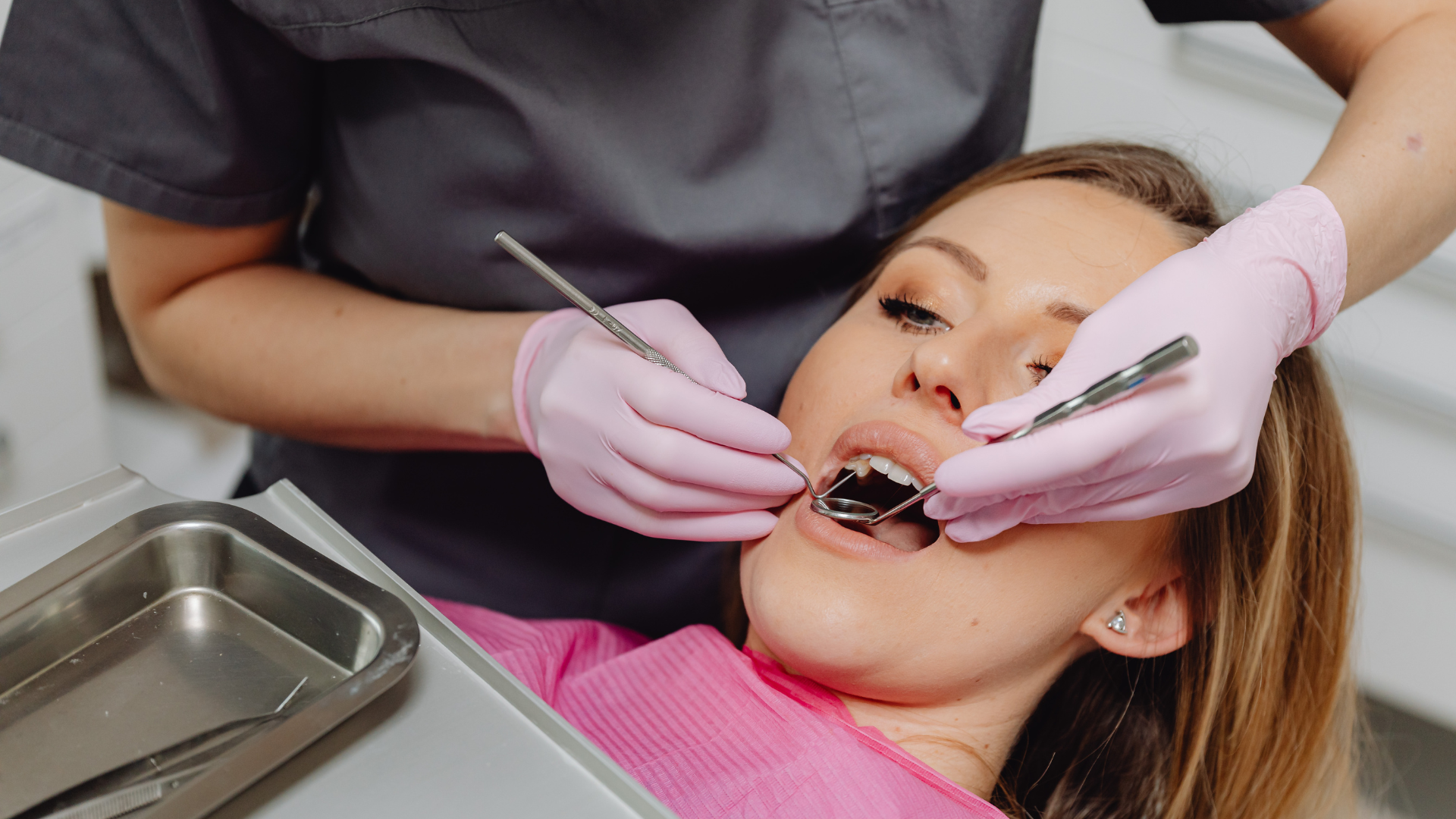Stop! 7 Mistakes to Avoid When Using At-Home Teeth Whitening Strips
Whitening strips are a convenient and affordable way to brighten your smile, but they can be surprisingly easy to misuse. Rushing the process or skipping a few simple steps can lead to uneven results, irritation, and unnecessary tooth sensitivity.
The dental team at Danforth Neighbourhood Dental Centre (DNDC) is here to guide you. We’ve broken down the most common mistakes people make with at-home strips and provided simple fixes to help you get a brilliant, comfortable result.
Mistake 1: Brushing Right Before Application
Many people think cleaner teeth equal better whitening, but brushing immediately before applying strips can cause more harm than good. Brushing—especially if it's vigorous—can temporarily weaken your enamel and irritate your gum tissue, making it more sensitive to the whitening agents.
Here’s what to keep in mind for the best results with minimal discomfort:
- Wait at least 30 minutes after you’ve brushed before using whitening strips. This gives your enamel a chance to recover.
- When you do brush beforehand, use a soft-bristled toothbrush and gentle, circular motions to avoid excess abrasion.
- Avoid abrasive toothpastes right before whitening, as these can make your teeth more susceptible to the peroxide in the strips.
The truth is, timing matters just as much as product choice. Giving your mouth a break between brushing and whitening can help prevent stinging and sore gums.
Mistake 2: Brushing Immediately After Removal
Your teeth are more sensitive and vulnerable just after whitening because the active chemicals temporarily open up the tiny pores in your enamel. If you grab your toothbrush right away, you risk scrubbing away temporarily weakened enamel or irritating your gums.
Here’s why you should pause before reaching for your toothbrush:
- The enamel is slightly softened during whitening, making it more prone to damage from aggressive brushing.
- Scrubbing can increase sensitivity, especially if you use abrasive or whitening-specific toothpastes.
Instead, do this:
- Rinse your mouth gently with water to remove leftover gel.
- Wait at least 30 minutes after taking off the strips before brushing. This gives your enamel time to settle and recover.
- When you do brush, use a soft-bristled toothbrush and gentle, non-abrasive toothpaste.
Waiting half an hour helps your teeth recover and keeps your enamel strong over time.
Mistake 3: Using Whitening Strips Too Frequently
It’s easy to assume that using strips more often will speed up your results, but overuse can do the opposite. Using them more frequently than recommended may wear down your enamel, cause serious tooth sensitivity, and severely irritate your gums.
Here are important usage guidelines:
- Always read and follow the package instructions for how often and for how long you should use the strips.
- Most at-home products are intended for daily use over a short period (usually a week or two) and shouldn't be a constant part of your routine.
- Watch for signs of irritation, tingling, or discomfort, which are clear signs that it’s time to take a break.
Using whitening strips too much won't speed up your results; you’re more likely to end up with sensitive teeth or noticeable uneven whitening.
Mistake 4: Not Waiting the Recommended Time
Rushing the process or leaving the strips on too long both create problems. While it’s tempting to leave them on longer for better results, overexposure to the whitening agent can cause tooth sensitivity or temporary white spots. Taking them off too early, conversely, means the active ingredient doesn’t get enough time to break down the stains.
- Overexposure may lead to increased sensitivity and risk to gum tissue.
- Removing strips too soon means the active ingredients don't work effectively.
Following product guidelines is important not just for the brightness of your smile but also for keeping your mouth healthy in the long term.
Mistake 5: Ignoring Gum Contact
Allowing the whitening gel to sit on your gums can lead to irritation, burning sensations, and even temporary damage to the soft tissues. Even a small overlap can cause discomfort that lasts for hours.
If you want to protect your gums while whitening, try these approaches:
- Trim or fold the whitening strip so it fits just the surface of your teeth, and not the gums.
- Press the strip down gently and use a clean finger or cotton swab to tuck the edges away from your gum line.
- If any gel does get on your gums, wipe it off right away. Don’t wait until the treatment is over.
If you ever feel pain or see redness lasting more than a day, call Danforth Neighbourhood Dental Centre for advice.
Mistake 6: Applying Strips Unevenly
If strips aren’t applied evenly, you’ll often notice patches—some teeth or parts of teeth end up whiter, while others remain unchanged. This uneven result can be difficult to fix once it appears.
A simple, careful approach can help you get consistent results:
- Dry your teeth with a tissue for better adhesion before applying.
- Align each strip with your gum line before pressing down.
- Smooth the strip from the center outward to prevent air bubbles.
- Fold the excess strip behind your teeth for full coverage.
When you slow down and give a little extra care to positioning, you can avoid frustrating white patches and ensure the whitening agent does its work evenly.
Mistake 7: Consuming Staining Foods Right After Use
After using whitening strips, your teeth are especially vulnerable to new stains. The whitening gel temporarily opens up the tiny pores in your enamel, which means richly pigmented foods and drinks can cause even more damage in the first couple of hours.
Eating or drinking coffee, tea, red wine, tomato sauce, or dark berries right after your session can actually reverse the results you’re hoping for.
Here are practical tips to protect your whitening investment:
- Wait at least 1-2 hours before having any richly pigmented foods or drinks.
- Stick to lighter-colored foods (like plain yogurt, white rice, chicken, or bananas) for the first few hours post-whitening.
- If you’re not sure exactly what counts as a “staining food,” a good rule is to avoid anything that would leave a mark on a white t-shirt.
Conclusion
Whitening strips can be a simple way to brighten your smile, but they require mindful application. The main thing is to follow the directions on the box and pay close attention to how your teeth and gums feel. Don’t rush the process—waiting before and after brushing makes a difference, and using a soft brush helps protect your enamel.
If you're considering a new teeth whitening in danforth routine, have concerns about sensitivity, or want to know the best options for your smile, don't guess—ask the experts. Book an Appointment with Danforth Neighbourhood Dental Centre today and get personalized advice from our experienced dental team.
Important Disclaimer: The information provided in this blog post by Danforth Neighbourhood Dental Centre is intended for general educational purposes only and is not a substitute for professional medical or dental advice, diagnosis, or treatment. Always seek the advice of a qualified dental professional with any questions you may have regarding your specific dental condition, products, or routine. Never disregard professional advice or delay in seeking it because of something you have read here. If you experience pain, severe sensitivity, or irritation, discontinue use of any at-home product and contact our office immediately.
Recommended For You






